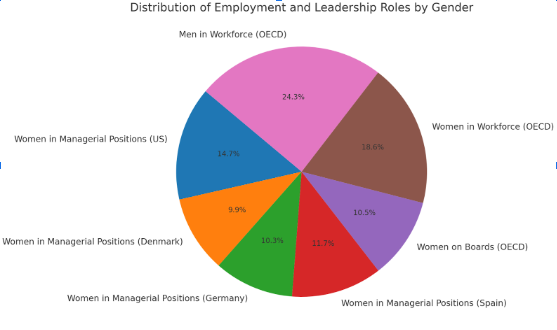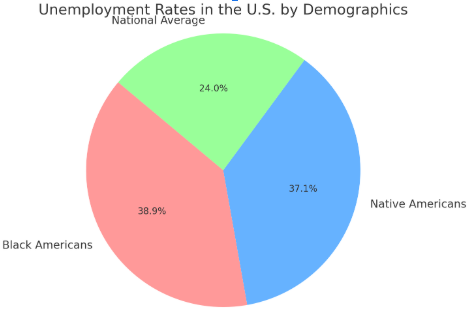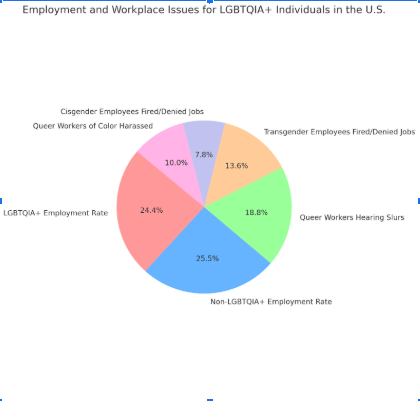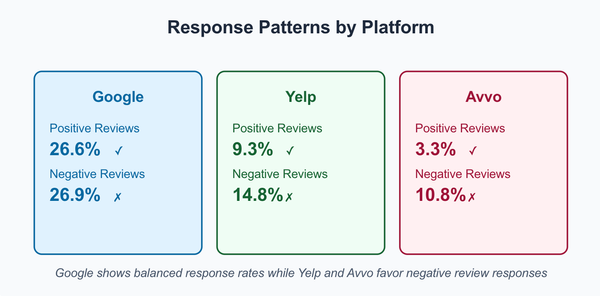The State of Workplace Harassment in 2024: Key Statistics and Insights

As millions of American workers head back to their jobs after the holidays, workplace safety is once again a top concern for the New Year. Workplace harassment is not only continuing to evolve, but it’s also becoming more challenging to spot, often hiding behind computer screens and digital communication platforms. At the same time, it has become more visible and easier to track, with harassment claims now more accessible than ever. Behaviors that may have been overlooked in the past are no longer tolerated as employees become more aware of reporting harassment.
According to a recent survey by (Traliant), which included over 1,000 U.S. workers, mental health has emerged as a critical area employers must address in 2024. A remarkable 86% of respondents agreed that employers must do more to support mental health in the workplace. Contributing factors such as burnout, toxic management, and stagnant wages point to broader economic issues affecting employees' mental well-being.
In this blog, we will look at key statistics on workplace harassment for 2024 and discuss the trends that will shape this issue in the future while focusing on how organizations can address harassment based on the legal definition of harassment.
Workplace harassment trends for 2024
Workplace harassment trends for 2024 show troubling statistics that highlight the ongoing issues employees face, with examples of bullying in many work environments. Let’s have a quick review:
- A significant 91% of the U.S. workforce has experienced some form of discrimination, including based on race, gender, weight, disability, age, religion, and more. — CNBC
- Women represent 78% of all sexual harassment cases filed with the Equal Employment Opportunity Commission (EEOC). — EEOC
- In 2023, the EEOC secured around $664 million in claims for workers who were victims of harassment in the workplace, marking a 30% increase from the previous year. — EEOC
- Over half (52%) of employees have witnessed inappropriate behavior happening in their workplace. — HRAcuity
- Racial discrimination is exceptionally high, with 48% of Black male workers and 36% of Black female workers reporting they’ve faced harassment or discrimination because of their race. — Pew Research
- Workplace bullying is also widespread, with over 48 million Americans, or about 30% of the workforce, having experienced it. — Business
Feeling stressed or harassed at work? Check out our Lawyer Density Statistics page to find the top employment lawyers in your state.
Harassment as Employment Discrimination
Harassment is a type of employment discrimination in the workplace that violates Title VII (of the Civil Rights Act of 1964), the Age Discrimination in Employment Act of 1967 ( also known as ADEA), and the Americans with Disabilities Act of 1990 ( known as ADA). In the U.S., harassment is defined as "unwelcome behavior based on race, color, religion, sex (including sexual orientation, gender identity, or pregnancy), national origin, age (starting at age 40), disability, or genetic information (including family medical history)."
However, U.S. law clarifies that minor annoyances or isolated incidents are not considered illegal harassment. Harassment is deemed unlawful when:
- Dealing with this unwanted behavior becomes a condition for keeping the job.
- The conduct creates a hostile, intimidating, or abusive environment.
- Employers are held responsible for harassment if it leads to adverse effects like being denied a job, losing employment, or experiencing wage loss.
Important Stats on Employment and Wage Disparities
Disparities in employment opportunities and wages show that discrimination still affects people based on gender, race, abilities, and sexual orientation. The legal definition of harassment helps explain actions that can create these unfair differences. Here’s a breakdown of the key findings:
Gender Disparities
- In the U.S., women hold just 41.4% of managerial positions. In European countries like Denmark (28%), Germany (29%), and Spain (33%), women hold only about one-third of these roles.
- On average, only 29.6% of board members in publicly traded companies across OECD countries are women.
- In OECD nations, 68.6% of men participate in the workforce compared to 52.4% of women.

Note: This pie chart shows the distribution of women and men in managerial positions, board memberships, and workforce participation across various regions. Each segment highlights the proportion of representation for each group based on the data provided.
Racial Inequalities
- In the U.S., Black Americans (8.6%) and Native Americans (8.2%) face unemployment rates much higher than the national average (5.3%).
- Weekly earnings highlight significant racial gaps—Latino Americans earn $777, Black Americans earn $801, and White Americans make $1,018.
- A 2020 French study revealed that candidates with Arabic-sounding names were less likely to receive interview callbacks, with a success rate below 25%.

Note: This pie chart indicates unemployment rates among Black Americans and Native Americans and the national average in the U.S. The chart highlights the higher unemployment rates faced by Black and Native Americans compared to the national average.
Challenges for People with Disabilities
- Nearly 8 out of 10 individuals with disabilities in the U.S. are excluded from the workforce, compared to 3 out of 10 for those without disabilities.
- Lower employment rates result in higher poverty levels for people with disabilities in both the U.S. and Europe.
- Across OECD nations, the employment rate for individuals with disabilities is 27% lower than their non-disabled counterparts.
LGBTQIA+ Workplace Issues
- In the U.S., LGBTQIA+ individuals have an employment rate of 88%, slightly lower than 92% for non-LGBTQIA+ individuals, even with similar education levels.
- Nearly 68% of queer workers report hearing offensive comments or slurs in their workplaces.
- Almost half (49%) of transgender employees report being fired or denied jobs due to their gender identity, compared to 28% of cisgender employees.
- Queer workers of color are more likely (36%) to face verbal harassment than their White counterparts.

Note: This pie chart represents the employment rates and workplace issues for LGBTQIA+ individuals in the U.S., highlighting employment rates, workplace slurs, and job denial or harassment experiences.
Workplace Discrimination Laws
The definition of workplace discrimination depends mainly on the laws governing a specific organization. Employers and HR professionals should have a solid understanding of employee rights, the legal frameworks in place, the organizations that protect these rights, and the processes for addressing discrimination complaints.
Employee Rights and Laws
In the U.S. several federal laws protect employee rights, including:
- Title VII of the Civil Rights Act: Prohibits discrimination based on gender, race, color, religion, national origin, and retaliation.
- Pregnancy Discrimination Act: This act provides additional protection against "sex" discrimination in pregnancy, childbirth, or related conditions.
- Equal Pay Act of 1963: Mandates equal pay for equal work.
- Age Discrimination in Employment Act of 1967: Protects employees aged 40 and above.
- Americans with Disabilities Act (ADA) of 1990: Prohibits discrimination based on disability.
Don't let workplace discrimination go unchecked. Find the best employment and labor lawyers at Lawyersrating.FYI, to help you take action!

Anti-discrimination Organizations
In the United States, the Equal Employment Opportunity Commission (EEOC) is the federal agency responsible for enforcing anti-discrimination laws. It investigates complaints of discrimination, including those related to the legal definition of harassment, works to resolve issues, and may file employee lawsuits to protect individuals' rights.
At the state level, organizations like California's Civil Rights Department (CRD) enforce state-specific anti-discrimination laws.
In the European Union (EU), national courts must first handle cases involving rights violations. They can be escalated to the European Court of Human Rights (ECHR) if necessary.
Procedure for Filing Complaints Against Workplace Harassment
If you feel your employer or coworkers are showing signs of workplace harassment or discrimination, you should take legal action immediately. Here are the steps to file a discrimination complaint with legal bodies in the U.S:
- Hire a professional Employment/Labor Lawyer
- Submit your complaint within 180 days of the discrimination incident.
- The EEOC will notify your employer about the complaint.
- If all parties agree, mediation may be conducted to resolve the issue.
- If mediation fails, the EEOC will investigate, which can take about 10 months.
- If the EEOC confirms your rights were violated, you will receive a "Notice of Right to Sue," allowing you to file a lawsuit.
How to Prevent Discrimination in the Workplace?
Here are three practical steps to help reduce and eliminate discrimination in your company:
- Set clear DEIB goals: According to Harvard Business Review, while 60% of companies have a DEI strategy, only 26% have set specific goals for gender representation, and just 16% have done so for race representation. By defining clear goals for Diversity, Equity, Inclusion, and Belonging (DEIB), you can hold the company accountable for making progress.
- Commit to pay equity: Although the gender pay gap has improved, closing the racial pay gap could take up to 25 years, according to the HRDive report. To address this, companies should commit to pay equity by using HR, demographics, and payroll data to identify and address any pay gaps. This includes looking at factors like education, skills, and job responsibilities.
- Educate all staff: Regular and proactive DEIB training is crucial to eliminating discrimination. Employees at all levels, especially leadership, should take part in training, which should be ongoing and not just a reaction to problems when they occur.
Hire the best employment /Labour Attorney Today!
The 2024 statistics on employment discrimination highlight the ongoing challenges employees face in the workplace. Workplace harassment examples, such as unwanted comments, unfair treatment, and exclusion, continue to affect people from different backgrounds. This shows that employers and the legal system must work together to create safer and more inclusive work environments. Legal protections are important in addressing these issues, and taking proactive steps can help reduce the impact of workplace harassment and discrimination.
If you are facing false allegations of harassment or experiencing mental health struggles due to workplace issues, seeking guidance from an experienced employment or labor attorney is crucial. You can find top-rated legal professionals specializing in workplace harassment cases at Lawyersrating.FYI. Don't wait—take action today to protect your rights and well-being.





